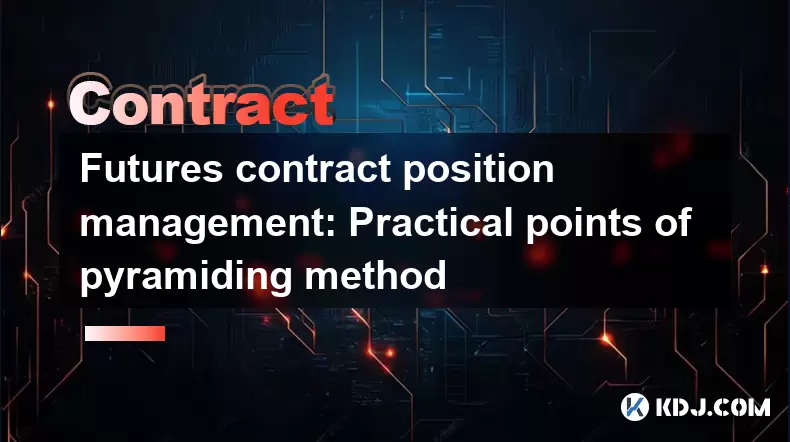-
 Bitcoin
Bitcoin $113900
-1.39% -
 Ethereum
Ethereum $3517
-4.15% -
 XRP
XRP $3.009
1.59% -
 Tether USDt
Tether USDt $0.9997
-0.04% -
 BNB
BNB $766.8
-1.41% -
 Solana
Solana $164.6
-2.38% -
 USDC
USDC $0.9998
-0.02% -
 TRON
TRON $0.3277
0.65% -
 Dogecoin
Dogecoin $0.2023
-1.67% -
 Cardano
Cardano $0.7246
0.05% -
 Hyperliquid
Hyperliquid $38.27
-4.77% -
 Sui
Sui $3.528
-0.52% -
 Stellar
Stellar $0.3890
-0.73% -
 Chainlink
Chainlink $16.16
-2.69% -
 Bitcoin Cash
Bitcoin Cash $539.9
-4.38% -
 Hedera
Hedera $0.2425
-2.00% -
 Avalanche
Avalanche $21.71
-0.97% -
 Toncoin
Toncoin $3.662
5.73% -
 Ethena USDe
Ethena USDe $1.000
-0.02% -
 UNUS SED LEO
UNUS SED LEO $8.964
0.35% -
 Litecoin
Litecoin $107.7
2.33% -
 Shiba Inu
Shiba Inu $0.00001223
-0.40% -
 Polkadot
Polkadot $3.617
-0.97% -
 Uniswap
Uniswap $9.052
-2.49% -
 Monero
Monero $295.1
-3.79% -
 Dai
Dai $0.9999
0.00% -
 Bitget Token
Bitget Token $4.315
-1.85% -
 Pepe
Pepe $0.00001060
0.11% -
 Cronos
Cronos $0.1342
-2.72% -
 Aave
Aave $256.0
-0.87%
Futures contract position management: Practical points of pyramiding method
Pyramiding in futures trading involves adding to winning positions as the trend strengthens, maximizing gains while carefully managing risk through disciplined entry timing and dynamic stop-loss adjustments.
Jun 17, 2025 at 01:14 pm

Understanding the Basics of Pyramiding in Futures Trading
Pyramiding is a strategy used by traders to increase their position size as the price moves in their favor. In the context of futures contracts, this method allows traders to build larger positions incrementally, thereby maximizing potential gains while maintaining control over risk. Unlike traditional position sizing strategies that advocate for fixed lot sizes, pyramiding dynamically adjusts exposure based on market momentum.
A key point to understand about pyramiding is that it should only be applied when the trend is strong and confirmed. Entering additional positions prematurely can expose traders to unnecessary volatility and reversals. The foundation of successful pyramiding lies in identifying high-probability setups and confirming trend strength through technical indicators like moving averages or volume analysis.
How to Structure Your Initial Position Before Pyramiding
Before applying the pyramiding method, it's essential to establish a well-defined base position. This involves setting a clear entry point, stop-loss level, and initial profit target. The initial trade must align with your overall trading plan and be based on objective criteria such as chart patterns, candlestick formations, or breakout levels.
One effective way to structure the base trade is to allocate a portion of your total capital—typically no more than 1% to 2%—to the first entry. This ensures that even if subsequent trades go against you, your account remains protected. Risk management begins at the first trade, not after adding more positions.
- Use a tight stop-loss to protect the initial investment.
- Set a realistic take-profit level based on historical volatility or support/resistance zones.
- Ensure the risk-to-reward ratio is favorable before considering any additions.
Adding Positions: When and How Much?
Once the initial trade is in profit and the trend shows signs of continuation, traders can begin to pyramid. The critical factor here is timing. Adding too early may result in being stopped out on subsequent entries, while waiting too long might cause missing part of the trend.
One common approach is to add equal-sized increments once the price has moved a predetermined distance from the original entry. For example, if the price moves 50 ticks in your favor, you could enter a second position of the same size. Each new layer should maintain consistent risk parameters.
Another method is to reduce the size of each subsequent position. This helps manage increasing exposure as the trade progresses further into uncharted territory. For instance, you might start with one contract, then add half a contract, then a quarter, creating a pyramid shape.
- Confirm trend continuation using moving averages or momentum oscillators.
- Only add to winning trades; never average down.
- Reassess stop-loss placement after each addition to protect earlier profits.
Adjusting Stop-Loss Levels During Pyramiding
As positions accumulate, so does the need for dynamic risk management. One of the most crucial aspects of pyramiding is adjusting stop-loss orders to lock in profits and minimize downside risk. A popular technique is to trail the stop-loss behind recent swing lows (for long positions) or swing highs (for short positions).
Traders often use break-even stops once the trade reaches a certain profit threshold. This means moving the stop-loss to the breakeven point to eliminate risk on the entire position. However, caution should be exercised to avoid placing stops too tightly, which can lead to premature exits.
Some advanced traders also layer stop-loss adjustments across different parts of the position. For example, they may move part of the position to break-even while allowing the remainder to ride with a trailing stop. This hybrid approach balances protection with flexibility.
- Trail stops based on volatility or recent price action.
- Consider partial exits to secure profits before moving stops.
- Never widen stops beyond your original risk tolerance.
Psychological Discipline and Emotional Control
Pyramiding demands a high degree of emotional discipline. As profits grow, it's easy to become overconfident and ignore warning signals. Maintaining objectivity is vital when managing layered positions.
Many traders fail not because their strategy is flawed, but because they allow emotions to dictate decisions. Greed can lead to holding onto positions too long, while fear may prompt exiting too early. Having a written trading plan and strictly adhering to predefined rules is essential.
Journaling every decision during the pyramiding process can help reinforce discipline. Reviewing past trades allows traders to identify behavioral patterns and refine their approach. Consistency in execution is what separates successful traders from the rest.
- Stick to your trading plan regardless of emotional impulses.
- Record all actions taken during the pyramiding process.
- Analyze both successful and unsuccessful pyramids to improve future performance.
Frequently Asked Questions
Q: Can pyramiding be applied to both long and short futures positions?
Yes, pyramiding works equally well for both long and short trades as long as there is a clear trend and confirmation of momentum. The principles remain the same: add to winning positions progressively while managing risk.
Q: Should I use pyramiding in sideways or range-bound markets?
No, pyramiding is best suited for trending environments. In range-bound or choppy markets, prices lack directional momentum, making it risky to add to positions incrementally. It’s advisable to avoid pyramiding unless a strong trend is evident.
Q: How do I determine how many layers to add in a pyramid?
The number of layers depends on your risk tolerance, available capital, and the strength of the trend. Some traders cap it at three layers, while others may go up to five. Never exceed your pre-defined maximum exposure per trade.
Q: Is pyramiding suitable for beginners in cryptocurrency futures trading?
Pyramiding requires experience and solid risk management skills. Beginners are advised to master basic futures trading concepts and practice in demo accounts before attempting pyramiding. Only implement this strategy when confident in your ability to read trends and manage layered positions effectively.
Disclaimer:info@kdj.com
The information provided is not trading advice. kdj.com does not assume any responsibility for any investments made based on the information provided in this article. Cryptocurrencies are highly volatile and it is highly recommended that you invest with caution after thorough research!
If you believe that the content used on this website infringes your copyright, please contact us immediately (info@kdj.com) and we will delete it promptly.
- Solana, Axiom Exchange, and Revenue: Navigating the Future of DeFi
- 2025-08-02 12:50:12
- Cardano (ADA) and Altcoin Gains: Navigating the Crypto Landscape
- 2025-08-02 12:55:11
- Bitcoin's Bearish Momentum: Fakeout or the Real Deal?
- 2025-08-02 12:30:12
- Ethereum's Rocky Climb: Analysts Eye New ATH Despite Recent Dip
- 2025-08-02 10:30:11
- Ethereum Price, ETF Inflows, and ETH Tokens: What's Driving the Market?
- 2025-08-02 10:50:12
- Ethereum, ADA, and Price Support: What's Next for These Crypto Titans?
- 2025-08-02 10:50:12
Related knowledge

Why is my Bitstamp futures position being liquidated?
Jul 23,2025 at 11:08am
Understanding Futures Liquidation on BitstampFutures trading on Bitstamp involves borrowing funds to open leveraged positions, which amplifies both po...

How to report Bitstamp futures for taxes?
Jul 30,2025 at 08:35am
Understanding Bitstamp Futures and Taxable EventsWhen trading Bitstamp futures, it’s essential to recognize that these financial instruments are treat...

Does Bitstamp offer inverse contracts?
Jul 23,2025 at 01:28pm
Understanding Inverse Contracts in Cryptocurrency TradingIn the realm of cryptocurrency derivatives, inverse contracts are a specific type of futures ...

What is the difference between futures and perpetuals on Bitstamp?
Jul 27,2025 at 05:08am
Understanding Futures Contracts on BitstampFutures contracts on Bitstamp are financial derivatives that allow traders to speculate on the future price...

How to find your Bitstamp futures trade history?
Jul 23,2025 at 08:07am
Understanding Bitstamp and Futures Trading AvailabilityAs of the current state of Bitstamp’s service offerings, it is critical to clarify that Bitstam...

Can I use a trailing stop on Bitstamp futures?
Jul 23,2025 at 01:42pm
Understanding Trailing Stops in Cryptocurrency TradingA trailing stop is a dynamic type of stop-loss order that adjusts automatically as the price of ...

Why is my Bitstamp futures position being liquidated?
Jul 23,2025 at 11:08am
Understanding Futures Liquidation on BitstampFutures trading on Bitstamp involves borrowing funds to open leveraged positions, which amplifies both po...

How to report Bitstamp futures for taxes?
Jul 30,2025 at 08:35am
Understanding Bitstamp Futures and Taxable EventsWhen trading Bitstamp futures, it’s essential to recognize that these financial instruments are treat...

Does Bitstamp offer inverse contracts?
Jul 23,2025 at 01:28pm
Understanding Inverse Contracts in Cryptocurrency TradingIn the realm of cryptocurrency derivatives, inverse contracts are a specific type of futures ...

What is the difference between futures and perpetuals on Bitstamp?
Jul 27,2025 at 05:08am
Understanding Futures Contracts on BitstampFutures contracts on Bitstamp are financial derivatives that allow traders to speculate on the future price...

How to find your Bitstamp futures trade history?
Jul 23,2025 at 08:07am
Understanding Bitstamp and Futures Trading AvailabilityAs of the current state of Bitstamp’s service offerings, it is critical to clarify that Bitstam...

Can I use a trailing stop on Bitstamp futures?
Jul 23,2025 at 01:42pm
Understanding Trailing Stops in Cryptocurrency TradingA trailing stop is a dynamic type of stop-loss order that adjusts automatically as the price of ...
See all articles

























































































